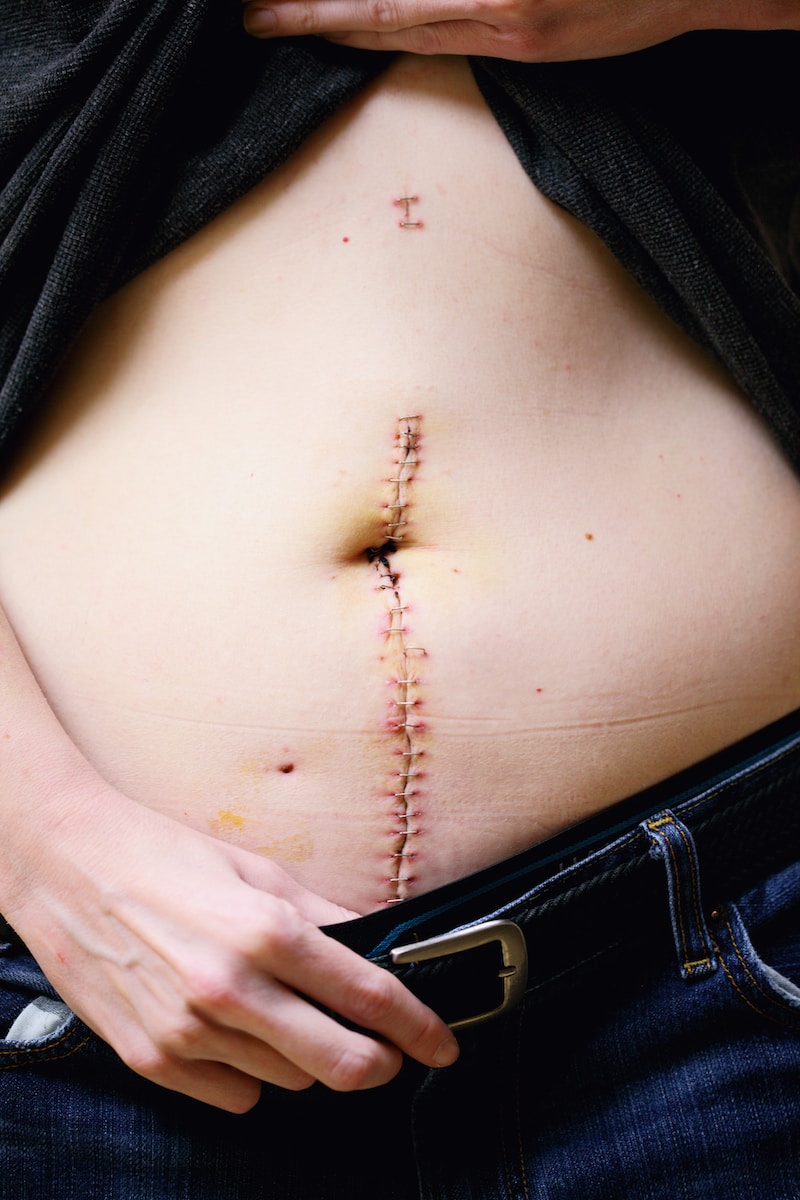Lap band surgery, also known as gastric banding, is a popular surgical procedure used to help people with obesity lose weight. While it has proven to be effective in aiding weight loss, there are potential risks and complications associated with the procedure. In this blog post, we will discuss nine hidden dangers of lap band surgery that you need to consider before starting your weight loss journey. We will explore the risks and potential complications associated with the surgery, as well as ways to manage and prevent these issues.
What is Lap band surgery?
Lap band surgery is a weight loss surgery that involves placing a band around the upper part of the stomach to create a small pouch, which limits the amount of food that can be consumed.
This procedure is typically performed on people who have a body mass index (BMI) of 40 or higher, or a BMI of 35 or higher with other weight-related health issues.
The purpose of this blog post is to highlight the hidden dangers associated with lap band surgery that people may not be aware of.
1. Complications during Surgery
 Lap band surgery, like any surgical procedure, carries certain risks.
Lap band surgery, like any surgical procedure, carries certain risks.
Some of the risks associated with lap band surgery include bleeding, infection, and adverse reactions to anesthesia.
Additionally, lap band surgery carries a risk of injury to internal organs during the procedure.
During lap band surgery, there is a risk of complications such as perforation of the stomach, injury to the spleen, and damage to the liver.
These complications can lead to serious health problems and may require additional surgeries to correct.
Before undergoing lap band surgery, it is important to take certain precautions to reduce the risk of complications.
This may include losing weight, quitting smoking, and following a healthy diet to improve overall health before the surgery.
2. Malnutrition and Nutrient Deficiency
 Lap band surgery can affect the way your body absorbs nutrients.
Lap band surgery can affect the way your body absorbs nutrients.
Specifically, the surgery can lead to a reduced absorption of vitamins and minerals such as iron, calcium, and vitamin B12.
If your body is not able to absorb enough nutrients after lap band surgery, you may be at risk for malnutrition and nutrient deficiencies.
This can lead to a variety of health problems, including anemia, osteoporosis, and nerve damage.
Following lap band surgery, it is important to follow a specific nutritional plan to ensure that your body is getting enough nutrients.
This may include taking vitamin and mineral supplements, as well as following a diet that is high in protein and low in fat and sugar.
3. Gastrointestinal Issues
 After lap band surgery, some people may experience gastrointestinal issues such as nausea, vomiting, and diarrhea.
After lap band surgery, some people may experience gastrointestinal issues such as nausea, vomiting, and diarrhea.
These issues can be caused by a variety of factors, including the reduced size of the stomach and changes in the digestive system.
To manage gastrointestinal issues after lap band surgery, it is important to follow a specific diet and avoid certain foods that may trigger symptoms.
Additionally, your doctor may prescribe medication to help manage symptoms.
To prevent gastrointestinal issues after lap band surgery, it is important to follow your doctor’s instructions carefully and avoid overeating or eating too quickly.
It may also be helpful to work with a nutritionist to develop a healthy eating plan.
4. Band Slippage and Erosion
 Band slippage and erosion are potential complications of lap band surgery.
Band slippage and erosion are potential complications of lap band surgery.
These issues can be caused by a variety of factors, including overeating, vomiting, and damage to the band during surgery.
If you experience band slippage or erosion, you may notice symptoms such as difficulty swallowing, abdominal pain, or reflux.
In some cases, these symptoms may require additional surgery to correct. Treatment options for band slippage and erosion may include surgical correction or removal of the lap band.
In some cases, it may be necessary to switch to a different type of weight loss surgery.
5. Infection and Wound Complications
 Infection and wound complications can occur during or after lap band surgery.
Infection and wound complications can occur during or after lap band surgery.
Possible causes include poor surgical technique, inadequate wound care, and pre-existing health conditions that increase the risk of infection.
Signs and symptoms of infection and wound complications include redness, swelling, pain, fever, and drainage from the incision site.
If left untreated, infections can lead to serious health problems.
Treatment for infection and wound complications may involve antibiotics, wound care, and in some cases, surgical intervention to remove infected tissue.
6. Emotional and Psychological Effects
 Lap band surgery can have emotional and psychological effects, including anxiety, depression, and body image issues.
Lap band surgery can have emotional and psychological effects, including anxiety, depression, and body image issues.
Patients may also experience changes in their relationships and social interactions.
Managing emotional and psychological effects of lap band surgery may involve seeking professional help, such as therapy or support groups.
Patients should also be encouraged to develop healthy coping strategies and self-care practices.
Support systems for emotional and psychological effects of lap band surgery can include family, friends, and healthcare providers.
Patients should also be informed about resources such as online communities and peer support groups.
7. Reversal and Removal Complications
Reversal and removal of lap band may be necessary due to complications or if the patient does not experience the desired weight loss.
Other reasons include pregnancy or the need for additional surgery.
Complications associated with reversal and removal of lap band include bleeding, infection, and injury to surrounding organs.
The risk of complications may be higher if the patient has had the band in place for a long time.
Precautions to take before reversal and removal of lap band include discussing the risks and benefits with a healthcare provider and ensuring that the patient is in good health prior to the procedure.
8. Financial Burden
 The costs associated with lap band surgery can vary widely and may include surgeon fees, hospital fees, and ongoing medical expenses.
The costs associated with lap band surgery can vary widely and may include surgeon fees, hospital fees, and ongoing medical expenses.
The potential financial burden of lap band surgery can be significant and may include out-of-pocket expenses, lost wages due to time off work, and ongoing medical costs.
Managing the financial burden of lap band surgery may involve seeking assistance from insurance companies or other organizations.
Patients should also be informed about resources such as payment plans and financial assistance programs.
9. Long-Term Effects and Maintenance
 While lap band surgery can result in significant weight loss, there are potential long-term effects that patients should consider.
While lap band surgery can result in significant weight loss, there are potential long-term effects that patients should consider.
These effects can include a higher risk of gallstones, acid reflux, and complications with the lap band, such as slippage or erosion.
Patients may also experience sagging or loose skin after significant weight loss.
Proper maintenance after lap band surgery is essential to ensuring long-term success.
Patients must adhere to a strict diet and exercise regimen to prevent complications and to ensure the lap band continues to function properly.
Follow-up appointments with the surgeon are also important to monitor progress and to address any potential issues.
Patients should follow the dietary guidelines provided by their surgeon and should aim to consume a balanced diet that is rich in protein, vitamins, and minerals.
Exercise is also important for maintaining weight loss and overall health.
Patients should aim to engage in regular physical activity, such as walking or swimming, for at least 30 minutes a day.
It is also important to attend all follow-up appointments with the surgeon and to report any potential complications or issues.
Conclusion
Lap band surgery can be an effective tool for weight loss, but it is important to weigh the potential risks and benefits before undergoing the procedure.
The hidden dangers of lap band surgery include complications during surgery, malnutrition and nutrient deficiency, gastrointestinal issues, band slippage and erosion, infection and wound complications, emotional and psychological effects, reversal and removal complications, financial burden, and long-term effects and maintenance.
By understanding these risks and taking the necessary precautions, patients can make informed decisions about whether lap band surgery is right for them.
Discovering a safer and more effective alternative to traditional weight loss methods is essential, especially when faced with the hidden dangers of lap band surgery.
If you've been seeking a reliable solution to shed those unwanted pounds without subjecting yourself to invasive procedures or extreme dieting, the PrimaJust weight loss method is your ultimate answer.
By downloading our exclusive free report, you'll unveil The Exact Method to Unlock Your Metabolism for All-Natural Weight Loss, enabling you to effortlessly lose 1-3 pounds per week, all without the need for restrictive diets or exhausting exercise routines.
Empower yourself to achieve your weight loss goals safely and effectively - grab your free report now and embrace a healthier, happier you!
Act fast, as this opportunity won't last forever.
[Source]Free Report
Discover the secret to losing weight effortlessly without dieting or exercising by booking your free Weight Loss Clarity Call.
Immerse yourself in these enlightening related blog posts
-
The weight-loss danger that many people don't want to hear
Many foods today contain certain substances supposedly approved by the FDA. You also find lots…
-
Ozempic for Weight Loss: Bold US Seeker Dive into Canada & Mexico
Ozempic for weight loss has become a widely discussed topic in the United States, as…
-
Is Ozempic for Weight Loss Worth the Risk? Uncovering Danger
If you're struggling with obesity, you've probably tried many weight loss methods, including diet and…














